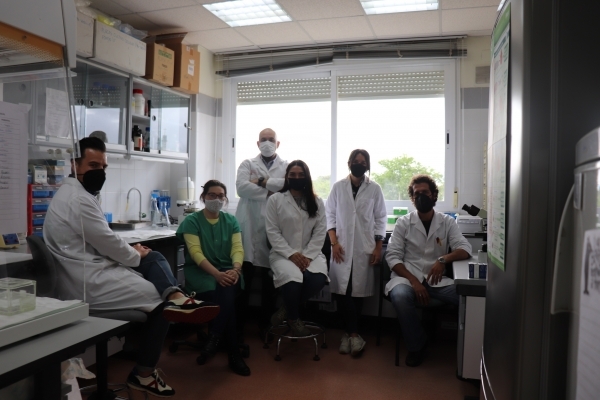



Study further describes the pig's immune response in lungs infected with PRRS
Study revealed the role of the enzyme 'Caspase-8' in 'apoptosis', a type of cellular suicide programmed by the body to eliminate damaged cells
Porcine Reproductive and Respiratory Syndrome (PRRS) virus is one of the viruses with the greatest impact on the swine sector worldwide. Endemic in most pig producing countries, it especially affects growing pigs, generating million-dollar losses globally.
The Animal Pathological Anatomy research group at the University of Córdoba (UCO), led by researcher Librado Carrasco, has described the immune response mechanism that occurs in the pig's lungs when they are affected by this pathogen.
Specifically, the work carried out a comparative analysis between strains of different virulence and studied in the role they played by what is called 'apoptosis' or programmed cell death, a kind of suicide orchestrated by the body itself to eliminate damaged cells or, in other words, an ace up its sleeve that the immune system reserves to avoid greater evils.
This is a mechanism "well studied in the lymphatic tissues of the pig," explains one of the authors of the research, Inés Ruedas, but has been little explored at the lung level. Specifically, the results give the name and surname of the person mainly responsible for this entire process. This is 'Caspase-8', the enzyme that regulates the chronicity of this foretold death that the body uses as a containment dam. Furthermore, according to the conclusions of the investigation, this 'suicide' cellular production occurs earlier in virulent strains, a fact that the research team attributes to the strong replication of the virus during the first days of infection.
Viruses versus macrophages
The research team, in collaboration with the Autonomous University of Barcelona, has also focused on the variation in macrophage populations within the lung, a type of white blood cell whose main function is to phagocytose foreign substances within the body.
According to José María Sánchez, another of the authors of the research, "as previous studies point out, macrophages located in the lung alveoli are the target cell of the virus." That is the entry point through which the pathogen spreads.
When this happens, explains the researcher, the number of macrophages decreases and the bacterial flora itself that until now lived in a symbiotic relationship with the organism turns against it, causing lung lesions and secondary infections.
The work provides new information from the point of view of basic science and takes another step so that effective vaccines can be developed in the future. This has been a complicated objective to date due to the high mutation rate that the virus presents.






